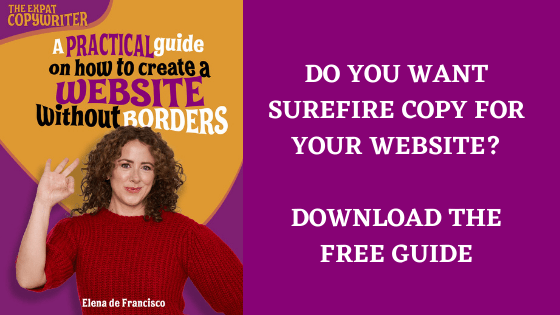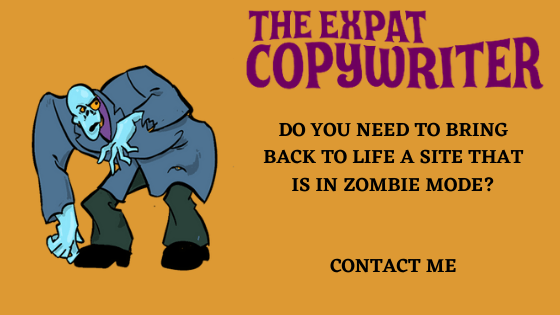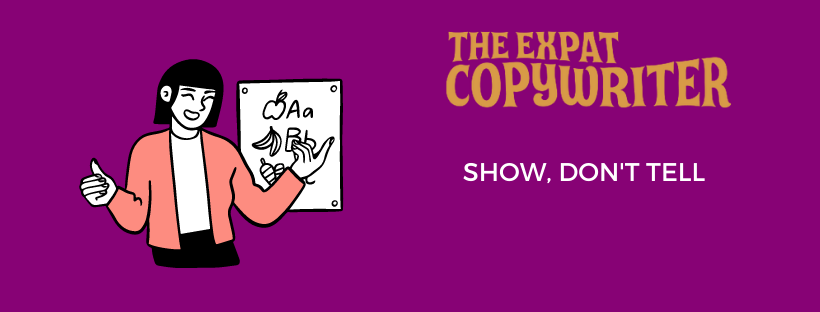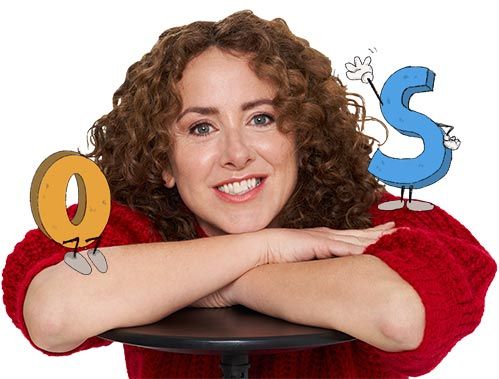Our number 1 enemy as business owners is attention deficit.
Writing has become a very difficult task.
It’s not true that people no longer read, as some like to assume.
What happens is that there’s an excess of content available, so if the first few lines of a webpage, blog or social post don’t grab the reader, they’ll move on.
There’s no need of becoming bitter about this, but we should work hard to communicate better.
Beware!
To communicate better isn’t about using difficult words to make us sound clever, but rather about expressing ideas in a clear, entertaining and absorbing way.
But how can we engage the reader so they want to stay on the page?
Helping them to easily picture what we’re telling.
And how do we achieve this?
With one of the golden rules of writing.

Show, don’t tell
This golden rule applies to all kinds of writing: creative, journalistic and also to persuasive writing or copywriting.
Don’t tell me it was windy. Tell me the trees were shaking so fiercely that it seemed they were going to crack at any time.
The difference between showing and telling is that when you show you’re invoking in the reader a mental image of the scene or emotion, whereas when you tell you’re simply relating that action or emotion.
This is even more important when we’re trying to sell something people cannot see, taste or touch.
Your goal in writing copy is to make the reader feel an emotion.
So they can perfectly picture a situation.
They can clearly see how good your product will make them feel, or they can see their problem solved with your service.
Showing entails empathising with the reader, so you can help them see their improved future situation in a vivid way.
There are various techniques to achieve this and, like everything else, you hone the technique with practice.
Let’s take a look at some of them.
Recommended Reading 6 useful tricks to sell to the Brain or How Neuromarketing Works
The importance of putting the reader in context
In copywriting it’s very important to bring those visitors who have landed on your page into a certain state of mind.
Let me explain.
To get them involved in what they are reading, you should make them feel a certain emotion.
This emotion can be worry, joy, fear, expectation, etc.
For example, let’s say you are selling a home burglar alarm.
At the top of your sales page, you want to remind your prospects how dangerous it is to leave a house empty as strangers may enter and occupy it.
Instead of simply saying:
- When you go on holiday you always feel worried about leaving the house empty.
You can place them in the scene by showing them a picture of what it really feels like:
- You’ve packed the last suitcase in the car and you’re on your way to the beach. You’re all happily debating which restaurant you’ll go to first, but you can’t mute that bad feeling.- what if someone is breaking the front door lock at this very moment?
You might be thinking, “the second text is longer”.
Yes, but which of the two makes you get more involved in the story?
The second text is painting a scene your prospect has surely experienced before.
With this little story, you’re making them feel that worry again.
And therefore you’re pushing them towards wanting to find a solution to their problems in order to feel good again: buy your alarm.
The ultimate trick to make people stay on your site #copywriting #DigitalMarketing #SmallBiz Share on XAction is the driving force of the story
What is it that keeps us glued to our screens and makes us binge-watch 8 episodes in one go?
Action.
And it doesn’t have to be the typical shooting and kidnapping action.
Action means that something is happening.
And that something can be many things that have nothing to do with superheroes: love, happiness, tenderness, success, wealth…
How can you express what’s happening?
Using strong verbs.
Strong verbs are specific and descriptive and have the dual purpose of making your copy more vivid and reducing the number of words.
These verbs reduce the number of words because they don’t need to go with adverbs or adjectives to strengthen the message.
For example instead of saying “speak softly” you can say “whisper“.
Or instead of saying “He held his arm tightly” better to say: “He grabbed his arm“.
Weak verbs are boring and commonplace and hinder your ability to paint an evocative picture in the reader’s mind.
It happens to all of us; our first drafts often contain these weak verbs.
But this is fixed when editing your first draft.
Look for weak verbs that can be replaced by stronger ones.
For example, if you come across the word “did” many times, try replacing it with a stronger verb. “He got”, “he realised”, “he materialised”.
Just because we should write in a simple way doesn’t mean we always have to use the same boring words we see all over the internet.
We can be more original.
That’s right…
We have to be 100% sure that our audience understands what the word we’ve chosen to use means.
Clarity always comes before originality.
Recommended reading How to be original on the Internet

Examples of verbs with force
steal, triumph, achieve, lift, manipulate, crush, advance, accelerate, seize, climb, desire, enjoy, fly, fight, struggle, fight, break free, tear, crush, envelop, flood, grow, crave, annihilate, spit, roar, bloom, dawn, dusk, procrastinate, lose, surprise, shine, overthrow, devour, engulf, catapult, polish, scatter, slobber, shake, slip, tie, excite, wrestle, thrust, drive, spike, hammer, strike, slide, float, drown, fix, galvanise, pulverise, block, ignore, fall, jam, gag, stall, ignite, enthuse, arouse, awaken, improvise, impel, shimmer, rock, sway, sharpen, shock.
There are many more.
Just explore the dictionary and dare to use strong verbs to emphasise the message and engage the reader.
The ultimate trick to make people stay on your site #copywriting #DigitalMarketing #SmallBiz Share on XMore examples of showing instead of telling
- We deliver quickly
Better: Your dinner will be delivered in half the time it takes you to choose what to watch next on Netflix.
- Our App is very easy to use
Better: Download the App and in the time it takes you to say Supercalifragilisticexpialidocious you’ll already be recording your first video.
- Wooden playhouse for children. Dimensions 112,5 x 119cm
Better: The inside of the playhouse measures 112.5 cm by 119 cm so it offers a play area of 1.34 m². With its large terrace, it can accommodate up to four children. This means that children from 3 to 12 years old can have fun together. And with its large slide, they’ll surely have a great time!
To sum up
As you’ve seen with these examples when showing you use more detail.
But it’s not enough to simply add more details, they have to be interesting for your prospects.
Describing for the sake of it can bore people to tears.
That’s why details should describe benefits, show emotions, tell a story.
I hope these examples have helped you to learn how to show rather than tell.
Not to confuse you, but I should add here that sometimes telling isn’t the wrong thing to do.
There will be times when you need to speed up the pace of the copy and just tell something, and that’s fine.
But in order to get your visitors engaged with your copy, stay on your page and eventually buy your product or service, you should show it to them.
The ultimate trick to make people stay on your site #copywriting #DigitalMarketing #SmallBiz Share on X


0 Comments